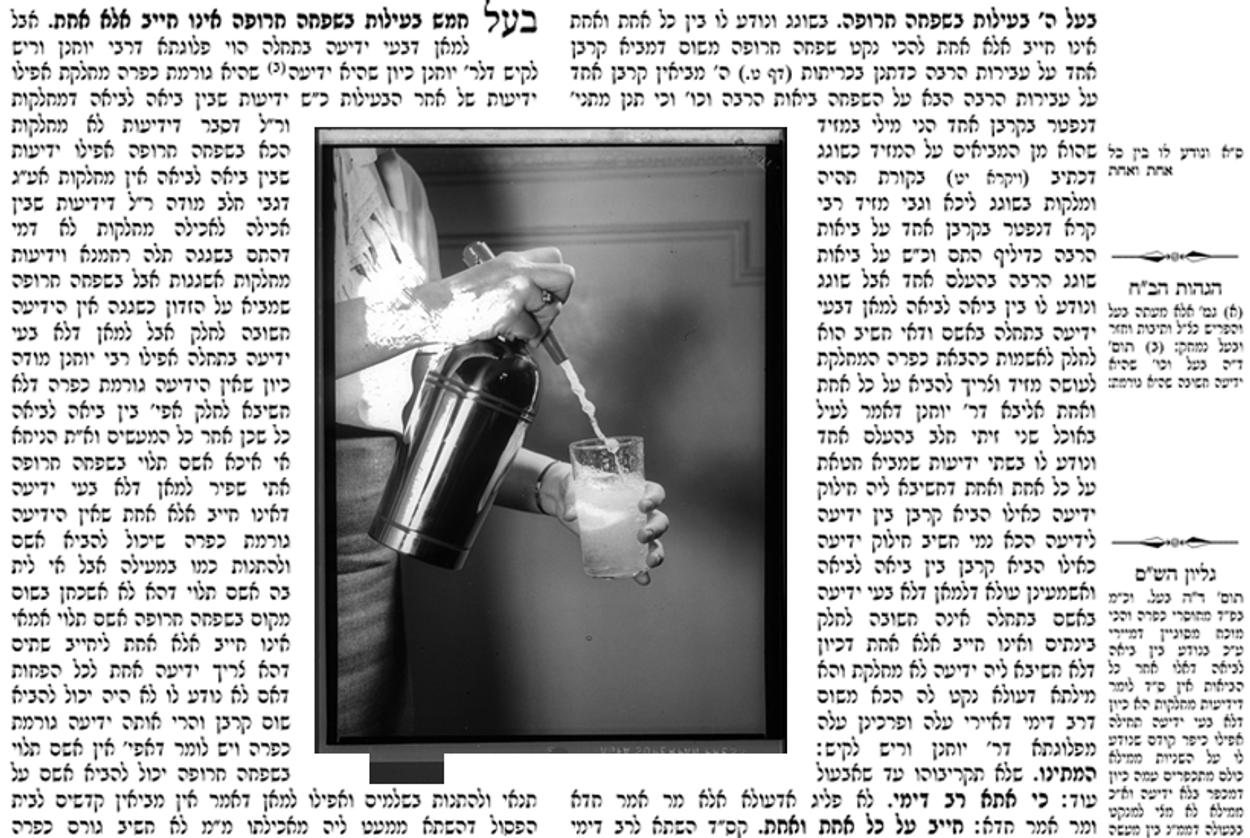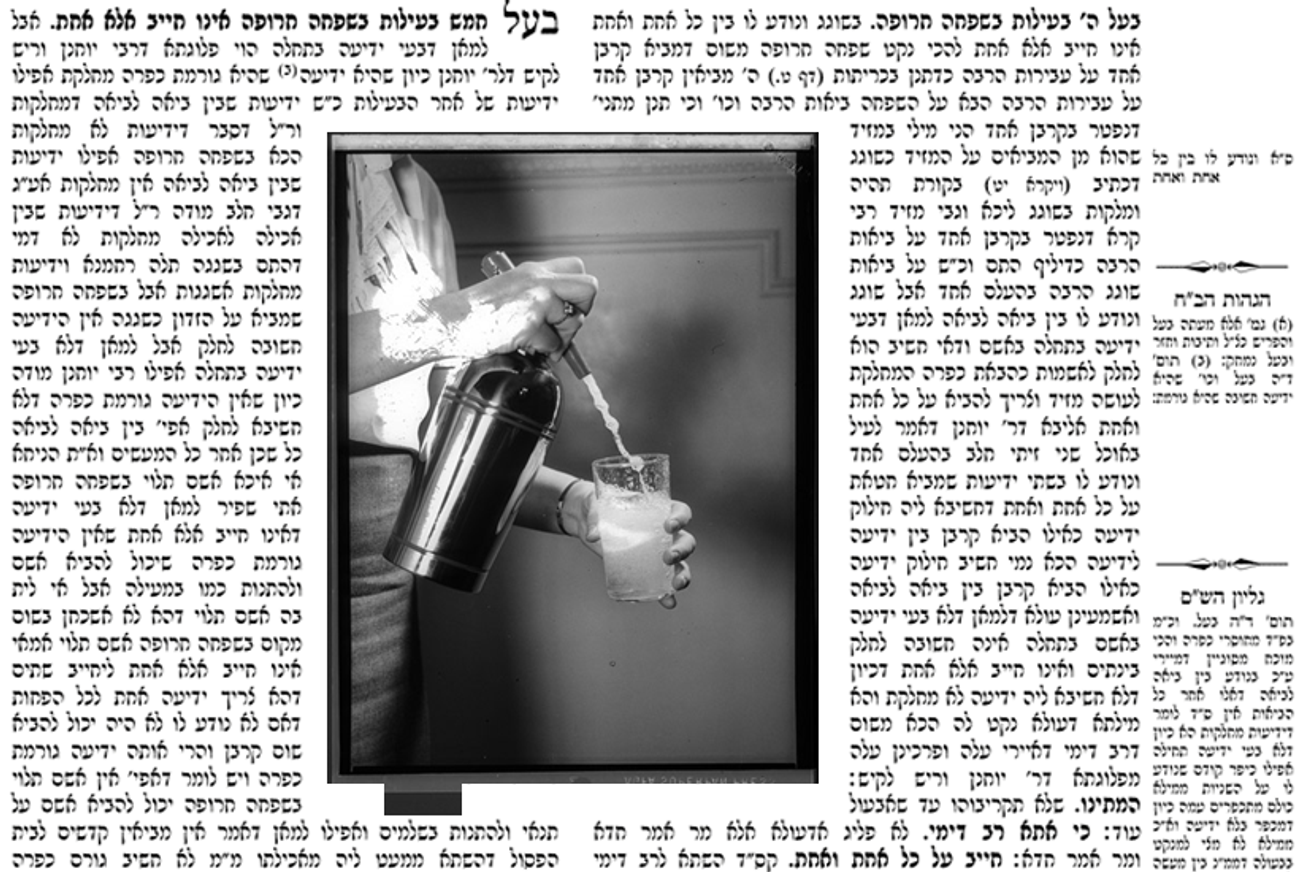Only the Wife Knows If the Husband’s ‘Semen Shoots Like an Arrow’
And other problems of divorce, infertility, and urination, in this week’s Talmud study




Literary critic Adam Kirsch is reading a page of Talmud a day, along with Jews around the world.
Last week, we read that it is a mitzvah to produce children, in accordance with God’s instruction to Adam and Eve, “be fruitful and multiply.” The rabbis debated how many children a Jew had to produce to fulfill the commandment, with some saying a boy and a girl was enough, while others said two boys were needed. (Notably, no one was content with two girls, presumably because a daughter did not continue a family’s line and property.) But is it only men who are commanded to have children, or are women equally obligated? This was a subject of disagreement in this week’s Daf Yomi reading. In Yevamot 65b, the mishna reads: “A man is commanded with regard to the mitzvah to be fruitful and multiply, but not a woman. Rabbi Yochanan ben Beroka says that a woman is also commanded.”
At first this might seem like a strange distinction: How, after all, could a man reproduce without the help of a woman, and vice versa? Surely men and women are equally obligated when it comes to bearing children. But as the Gemara goes on to explain, the issue is important when it comes to deciding divorce cases. Until very recently, a couple that could not have children had no way of knowing whether it was the man or the woman who was infertile. The only remedy would be for the couple to divorce and each party to remarry, hoping to have children with a new partner. In this way, it might be possible to deduce where the infertility lay.
For this reason, we read in Yevamot 64a, “if a man married a woman and stayed with her for 10 years and she did not give birth,” he was required to divorce her, so that he could remarry and try again to have children. The responsibility for the divorce lies on the man, because, according to the rabbis, he is the one who is legally obligated to bear children. But what if a woman, following Yochanan ben Beroka’s view, decides that she too is obligated to try to reproduce and demands a divorce from her husband, believing that he is infertile and she is not? On one occasion, the Talmud relates, a woman came before Rabbi Yochanan in the synagogue at Caesarea and demanded a divorce from her husband, after 10 years of childlessness. Yochanan ruled that the man must grant the divorce, and further, that he must give her back the property she brought into the marriage. Surely, the Gemara reasons, this is proof that the woman is obligated to reproduce; otherwise, why would Yochanan have taken her side?
But perhaps, the objection comes, there is another compelling reason why a woman ought to have children—not a divine commandment but a human need. In another legal case, a woman demanded a divorce on the grounds of childlessness, saying, “Does this woman not require a staff for her hand and a hoe for her burial?” This was a metaphorical way of saying that, in her old age, she would need children to support her and mourn for her. If her husband couldn’t give her those children, she had the right to try again with a new partner. Rav Nachman agreed: “In such a case as this, we certainly force the husband to divorce her.” A divorce granted for these reasons does not imply that the woman is bound to “be fruitful and multiply”; it only recognizes that children are emotionally and materially necessary to her.
If a man divorces a woman on the grounds of childlessness, she is allowed to get remarried. After all, it may be the husband who was infertile; or she may be suffering from a temporary condition that will pass. Or, perhaps, the problem was that “he did not merit to be built from her”: that is, Heaven for some reason did not want the two of them to have children together. But if a woman marries two husbands for 10 years each, and neither marriage results in children, then she is forbidden to marry a third time, for now the presumption is that she is permanently infertile.
This rule leads to a discussion of how Jewish law establishes presumption. How many times does something have to happen before it becomes expected? Here, as always, opinion is divided. The rabbis raise the question of circumcision: If a mother has two sons die as a result of being circumcised, should she try to circumcise the third, or should she assume that there is some inherited weakness that makes the procedure deadly? Rabbi Yehuda HaNasi says that the third boy should be left uncircumcised, while Rabban Shimon ben Gamliel says that he should undergo the procedure, and only if he too dies should future boys be left alone. In other words, for Yehuda HaNasi, two examples establish a pattern, while Shimon ben Gamliel requires three.
The same logic, the Gemara goes on, holds for sisters. Once there were three sisters who each lost a son as a result of circumcision, and the fourth sister was told not to circumcise her son, since there was clearly something inherited—as we would say, genetic—at stake. “There are families whose blood is thin and there are families whose blood clots,” the Gemara notes, and if several boys in the same family die, it is evidence that the family itself has thin blood. By the same token, “a man should not marry a woman from a family of epileptics or from a family of lepers … if it was established three times.” A family with two lepers might just have bad luck, but three or more lepers suggests an inherited condition.
The question of which partner in a marriage is responsible for childlessness has financial implications, as well as moral ones. If a wife is infertile, her husband does not have to pay back her marriage settlement when they divorce. In most cases, however, it’s impossible to know for certain that it is the wife who is infertile, so she is allowed to take her property with her out of the marriage. What happens, however, the rabbis ask in Yevamot 65a, if a woman has three marriages in a row, each 10 years long, and none of them produce any children? (Such a woman is not supposed to contract a third marriage, but an exception is made if she marries a man who already has children.) In this case, it is legally presumed that she is infertile. Can her first two husbands now claim back their marriage settlements from her, on the grounds that she was incapable from the first of giving them children? The rabbis’ compassionate answer is no, since “she can say to them: It is now that I have become weak.” In other words, her infertility at the time of the third marriage is not proof that she was already infertile at the time of the first; something might have changed physically in the interim.
Say, on the other hand, that in her fourth marriage, the woman at last bears children, proving that she was fertile all along. Can she retroactively claim the marriage settlement from her third husband, if he divorced her on the grounds of childlessness? Here, too, the rabbis counsel compromise and forbearance: “We say to her: Your silence is preferable to your speech.” That is because, if she presses the matter, her third husband might annul their divorce, which had been granted on the presumption that she was infertile. This would mean that her fourth marriage was retroactively rendered invalid, and her child from that marriage would become illegitimate, a mamzer. Rather than risk that outcome, the rabbis advise all parties to hold their peace.
And what if a divorcing childless couple fights over who is responsible, with each blaming the other for the infertility? In this case, Rabbi Ami says, “she is believed”: The woman’s testimony is accepted over the man’s. The reason, he explains, is that “She is certain whether his semen shoots like an arrow, whereas he is not certain whether his semen shoots like an arrow.” The rabbis assume that male infertility is accompanied by impaired ejaculation, and they further assume that the woman would be able to detect this physically. Neither of these assumptions seems sound, but then the rabbis were not working with modern medicine.
In the course of this discussion, near the conclusion of chapter 6 of Tractate Yevamot, we hear the grim story of Rav Huna’s students. Rav Huna, we learn in Yevamot 64b, would discourse about the Torah at such great length that his students were unable to go use the bathroom when they needed to. (Apparently walking out during one of Rav Huna’s lectures would have been unthinkably disrespectful.) As a result of holding in their urine for too long, all 60 of them were afflicted by a disease the Talmud calls suskhinta, and they became impotent. The only one to be cured was Rav Acha bar Yaakov, who undertook the following cure: “They suspended him from the cedar column that supported the study hall, and a substance that was as green as a palm leaf emerged from him,” and he was healed. This seems to be a fable about the dangers of excessive Torah study: Zeal for the Torah is encouraged, but not at the price of permanent bodily weakness. As Rav Acha says, quoting Ecclesiastes, “Wisdom preserves the life of him who has it.”
***
To read Tablet’s complete archive of two years of Daf Yomi Talmud study, click here.
Adam Kirsch is a poet and literary critic, whose books include The People and the Books: 18 Classics of Jewish Literature.
Adam Kirsch is a poet and literary critic, whose books include The People and the Books: 18 Classics of Jewish Literature.